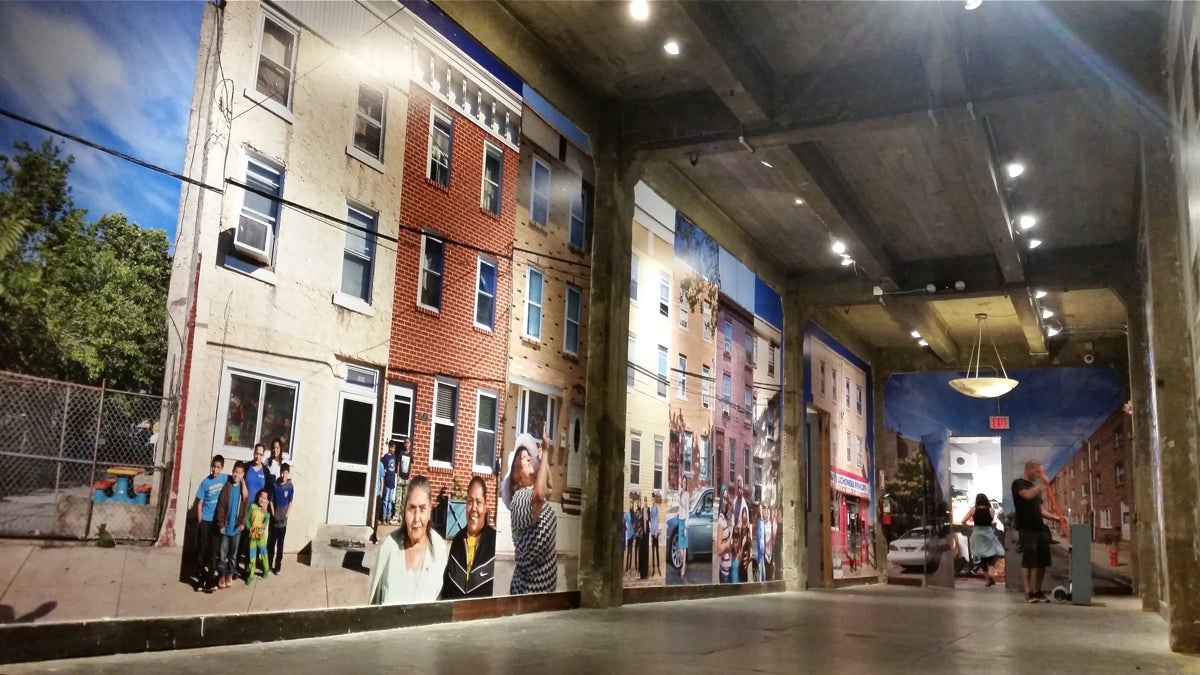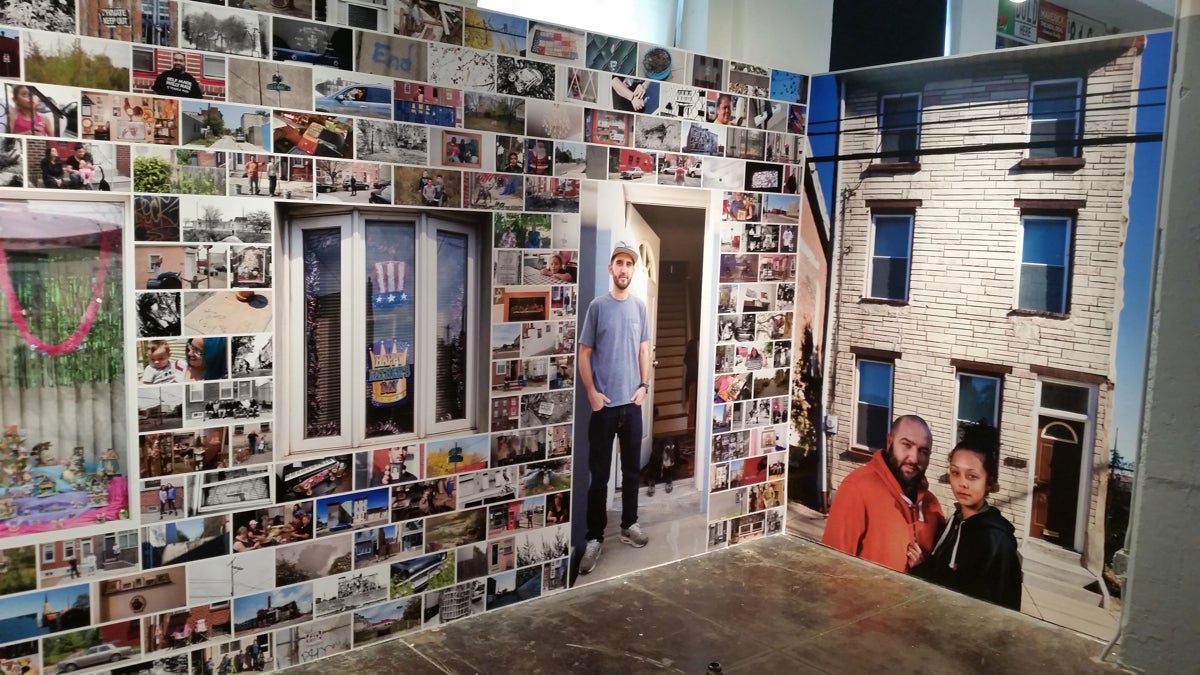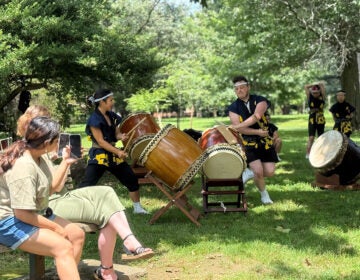Kensington closeup features hundreds of photos assembled block by block
Listen
''The Block
The Philadelphia Photo Arts Center opened in Kensington in 2009, offering workshops and exhibitions for people interested in the discipline. But founder Sarah Stolfa noticed few people from the immediate neighborhood were coming to the center.
“Most of the people that come to PPAC for the programming don’t share the same ZIP code as us,” said Stolfa. “When we realized that, we thought of a way to engage the community in the art-making process.”
Kensington has more than its fair share of urban problems — poverty, blight, crime — but Stolfa was not seeing any documentary photography projects that showed the Kensington she knows.
“Kensington has got a bad rap. A really bad rap,” said Stolfa. “There are photo projects out there that show us that. I feel like it doesn’t change the way we respond. I don’t think you look at those photographs and are inspired to do something.
“Most people are numb, because they’ve seen those pictures over and over.”
Instead of bringing in a documentary photographer, Stolfa brought in the New York-based artist Hank Willis Thomas. His task was to get to know the residents of Kensington, who eventually allowed him inside their homes. They became participants in the photography process.
 Five hundred photos, taken as part of the Philly Block Project, make up ”The Block.” (Peter Crimmins/WHYY)
Five hundred photos, taken as part of the Philly Block Project, make up ”The Block.” (Peter Crimmins/WHYY)
The result is “The Block,” a photo project focused on a particular intersection —- Third Street and Cecil B. Moore Avenue— and its four surrounding blocks. Thomas led a team of photographers to fan out in the zone, with help from an outreach team from PPAC that built relationships with the residents.
“This block is unique because it’s a very multi-ethnic block,” said Thomas. “A lot of times, Philadelphia is pretty segregated. But you have Puerto Rican families and Dominican families and African-American families and Turkish families. There are people from Slovenia.”
The team came away with about 15,000 images, edited down to several hundred, installed in dramatic fashion — some of them blown up to gigantic, floor-to-ceiling size, while others are clustered into grids, jammed together as tightly as rowhomes.
The grids (“brick walls” as Thomas describes them) show the good and the bad: vacant lots with trash; families in a cramped kitchen making tamales for a celebration; young homeowners living in a newly constructed house; and older homeowners living with furniture covered in plastic.
“Instead of selecting the top 30 photographs from the 15,000, which is generally how photography is done, we wanted to create the complete view of the block,” said Wyatt Gallery, one of the collaborating photographers.
“We were amazed by how welcoming the neighbors were,” said Thomas. “The fact they were willing to open their doors to us was the reason we made some photos really large. But then also letting the eye wander over small details, thinking about the community members as the building blocks of the community, and the photographs being the bricks of that metaphor.”
Some of the neighbors were wary of photographers roaming the neighborhood. Part of the year-long process including time for them to warm up to the project.
In an earlier phase of the Philly Block Project, the PPAC asked neighbors to submit personal photographs to an exhibition of Kensington as seen and lived by its residents. The current exhibition, the final part of the year-long project, features a temporary pop-up space in an open lot across the street from PPAC, where workshops, speakers, and performances will take place.
WHYY is your source for fact-based, in-depth journalism and information. As a nonprofit organization, we rely on financial support from readers like you. Please give today.





